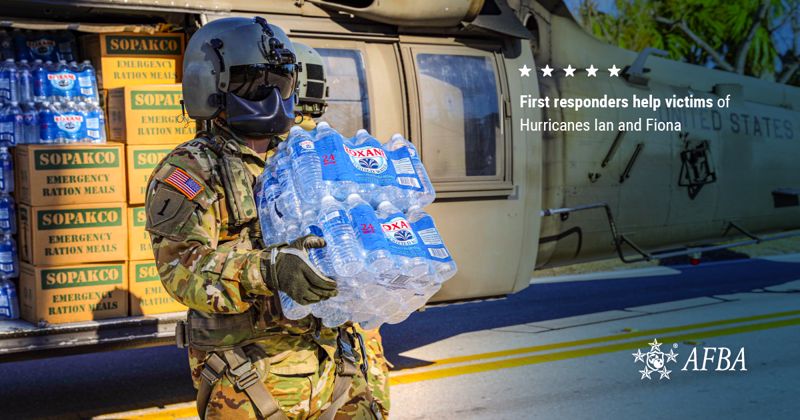First responders are integral to disaster relief, and few catastrophes are as damaging and life-threatening as hurricanes. These natural disasters can wreak havoc anywhere they go, stranding families and causing mass destruction.
The effects from Hurricanes Ian and Fiona required a great deal of help getting the affected areas back on track and functioning again. Thankfully, many first responders answered the call of duty from across the U.S., applying their expertise and passion to help with many relief efforts.
“You’re looking at 12-hour days”: The IAFF first responder Disaster Relief team helps with Hurricane Ian
Touching down in Florida on September 28, 2022, the destruction from Hurricane Ian cost nearly $60 million to repair and left over 100 people killed. Ian is the second-deadliest hurricane of this century, behind only Katrina in 2005. Ian was classified as a Category 3 storm when it first landed in Cuba, growing to a Category 4 by the time it hit Fort Myers, Florida.
The International Association of Firefighters (IAFF), led by John Gardell, had left to assist with efforts in Florida less than a day before Ian’s landfall. Because the IAFF’s days often started at 7 a.m., Gardell says, they were often working for 12 hours with very little rest, tarping roofs and removing damaged items, among other tasks.
 The appearance of the U.S. Department of Defense (DoD) visual information does not imply or constitute DoD endorsement.
The appearance of the U.S. Department of Defense (DoD) visual information does not imply or constitute DoD endorsement.Pennsylvania Task Force 1
The IAFF is one of many first responder teams that helped with Hurricane Ian. In South Carolina were 45 members of Pennsylvania Task Force 1, which included first responders from the Philadelphia Fire Department and others from various parts of PA. This team was practiced in urban search-and-rescue, and they applied their training to relief efforts.
Maryland Task Force 1 and N.Y. state troops help with Hurricane Fiona
Hurricane Fiona, which primarily impacted Puerto Rico, Turks and Caicos, and the Dominican Republic, was a Category 1 hurricane that hit Puerto Rico on September 18, 2022, causing blackouts and leaving many people without running water. Over 1,000 residents required rescuing and four people were killed.
Maryland Task Force 1 was one of the teams who lent their aid to victims of Hurricane Fiona. A FEMA task force, the team consists of 35 firefighters and citizens from across the state. This group was initially the only federal team sent to assist with relief efforts.
The New York Police Department also sent 100 state troops and drones to contribute after Puerto Rico Governor Pedro Pierluisi requested assistance from those who could speak Spanish to help with rescue operations. The drones were intended to conduct surveillance of the damage.
Veterans Affairs
Veterans Affairs had several issues dealing with Hurricanes Fiona and Ian. The VA’s regional team had just finished its efforts with Hurricane Fiona, but when Hurricane Ian hit, they were forced to evacuate their inpatients from the Bay Pines Medical Center. This decision came after speaking with the National Weather Service and local and regional leaders. 152 people were relocated to safety, which included those in acute, hospice, domiciliary, and long-term care.
First responders’ persistent efforts with Hurricanes Ian and Fiona
First responders across the U.S. were sent to help with Hurricanes Ian and Fiona after they had caused severe destruction across Florida, South Carolina and Puerto Rico, among other places. Armed with trained firefighters, medics, and citizens with various talents, first responder airmen and women are always hunting the storms that threaten the U.S., and their efforts are crucial for rescuing citizens and helping rebuild after the damage of a hurricane.

